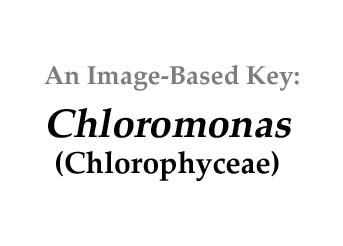|
Home / Chlorophyceae / Unicells / Flagellated / Chloromonas |
||||
|
|
||||
|
|
||||
|
Click on images for larger format |
||||
Name derivation: |
||||
|
Green motile cell |
||||
Classification: |
||||
|
Chloromonas Gobi, 1899-1900; 86 of 114 species descriptions are currently accepted taxonomically (Guiry and Guiry 2012). Order Chlamydomonadales; Family Chlamydomonadaceae; 55 of 73 described species names are currently accepted taxonomically.Synonym of C. nivalis: C. cryophila, Pteromonas nivalis and Scotiella nivalis (Guiry 2012)
|
||||
Morphology: |
||||
|
Biflagellate unicells variable in shape from spherical to spindle-shaped, some asymmetric. Lack pyrenoids, separating them from Chlamydomonas (Guiry 2012). Color of cells from green to red depends on the relative concentration of chlorophyll and carotenoids, especially astaxanthin (red). The yellow and red accessory pigments aid in blocking UV radiation thus are prominent in exposed habitats such as snow. Nonflagellated cysts tend to dominate near the surface of snowfields, while flagellated cells are located in deeper layers with less light intensity (Novis et al. 2008). |
||||
Similar genera: |
||||
|
|
||||
Habitat: |
||||
|
Cryophils. In snow: Chloromonas nivalis, C. polyptera and C. pichinchae and several other species are important snow algae found on glaciers and permanent snowfields. Other chlorophycean snow algae include Chlainomonas kolii, Chlainomonas rubra, Chlamydomonas nivalis, Raphidonema tatrae. In addition two chrysophyceans (Chromulina chionophila and Ochromonas smithii as well as a cryptophycean Cryptomonas frigoris are included, all of which have optimal growth at <10 C (Hoham 1975). Also: Soil, freshwater, pools, eutrophic lakes (Guiry 2012). |
||||
References: |
||||
|
Guiry, M.D. and G.M. Guiry 2012. AlgaeBase. World-wide electronic publication, National University of Ireland, Galway. http://www.algaebase.org; searched on 22 December 2012. Hoham, R.W. 1975. Optimum temperatures and temperature ranges for growth of snow algae. Arctic and Alpine Research 7(12):13-24. Novis, P.M., R.W. Hoham, T. Beer and M. Dawson 2008. Two snow species of the quadriflagellate green alga Chlainomonas (Chlorophyta, Volvocales): ultrastructure and phylogenetic position within the chloromonas clade. J. Phycol.44: 1001-1012. |
||||







